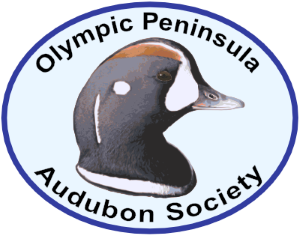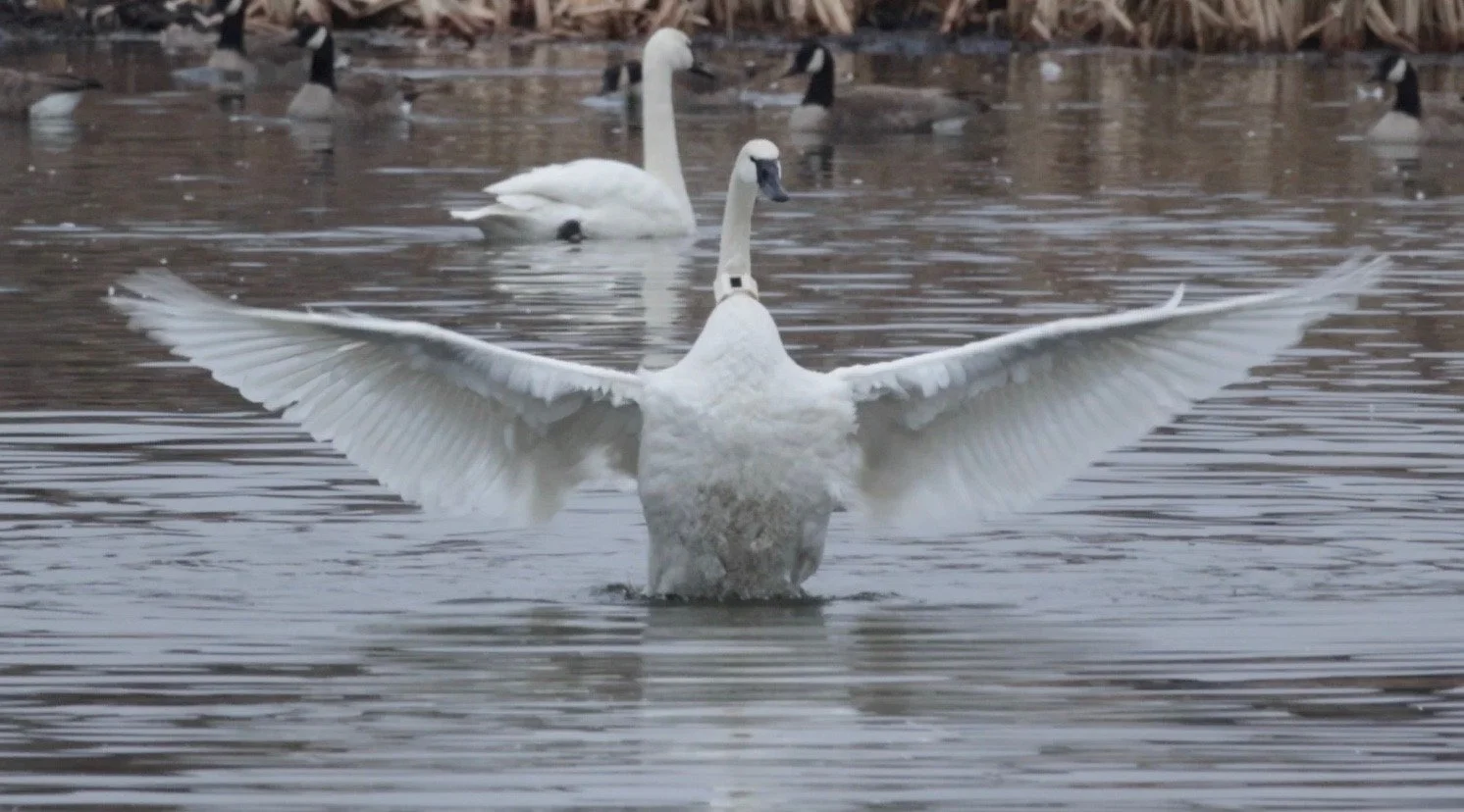Trumpeter Swan GPS collared for WDFW–CalPoly Humboldt study prepares for flight from the irrigation pond at Woodcock and Kirner Roads, dawn of February 18, 2025. Photo: Bob Phreaner
Sequim-wintering Swan is the First to Travel South From Alaska Breeding Grounds
by Laura Davis, Co-Leader, OPAS Swan Study
In these early days of the Pacific Coast Population Trumpeter Swans' annual autumnal migration south, the OPAS Swan Team has received some exciting news. The swan photographed here on Kirner Pond, was the very first of a group of study birds to come back online in the Salish Sea region after migrating down from summer breeding grounds near Glennallen Alaska. Heading south, it crossed last Thursday, October 30 from inland British Columbia to Vancouver Island, where it it roosted on a small lake and spent time foraging in the agricultural fields west of Qualicum Bay. (See map screenshot at bottom of page.)
Trumpeter Swan GPS collared for WDFW–CalPoly Humboldt study, dawn of December 4, 2024. Photo: Sally M. Harris
This particular swan had overwintered in the Sequim area last year from the end of November 2024 to mid-March 2025; researchers had attached GPS-tracking collars in the Skagit Valley the previous winter, January 2024. This swan's collar has continued to transmit its location at regular intervals to the collaborative research team of CalPoly Humboldt and the WDFW Waterfowl Section. This allows their important ongoing study of habitat usage of the Pacific Coast Trumpeters—a population with distinctly different conservation issues than other Trumpeter populations. This is the first of the Trumpeter Swans GPS collared for this research study to return for this new winter season.
You can read more about the study on our OPAS Swan Study page, including “New Research to Advance Migratory Swan Conservation”.
Map screenshot courtesy: WDFW


